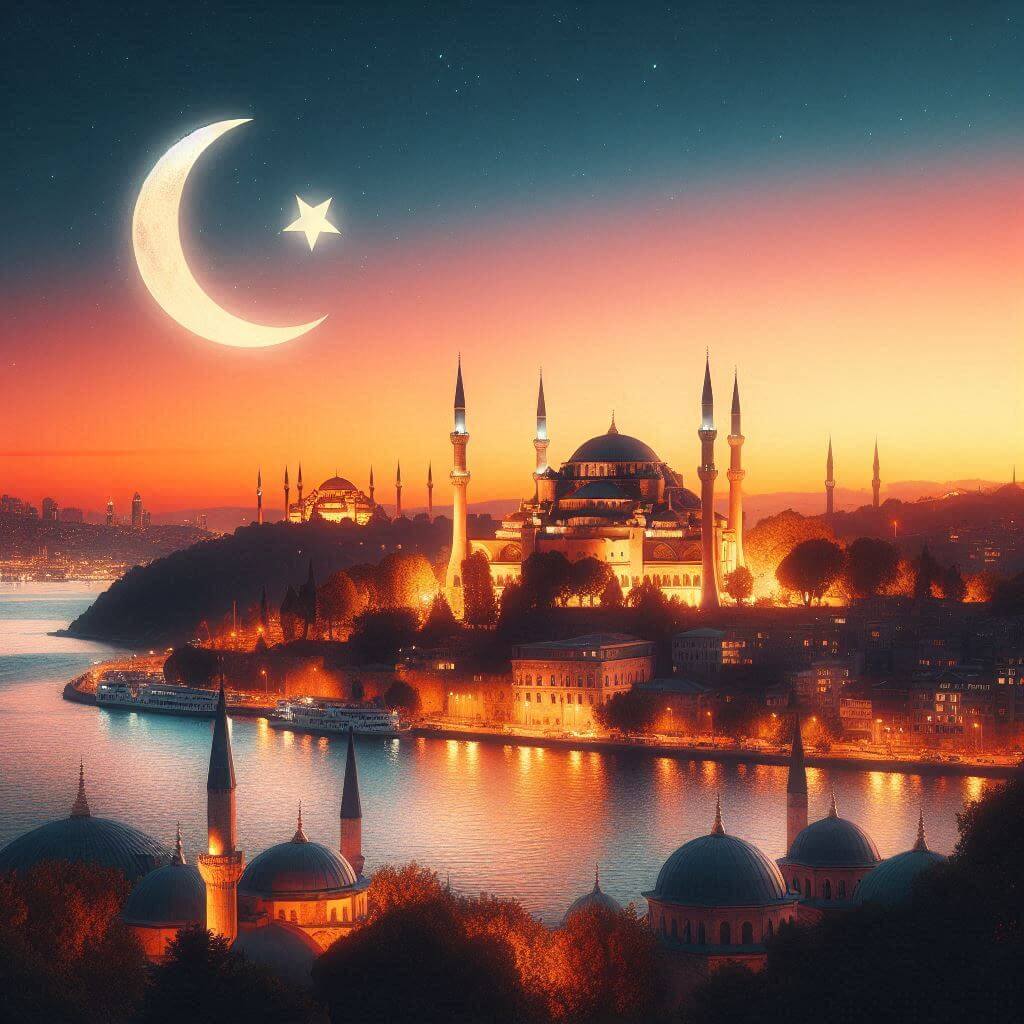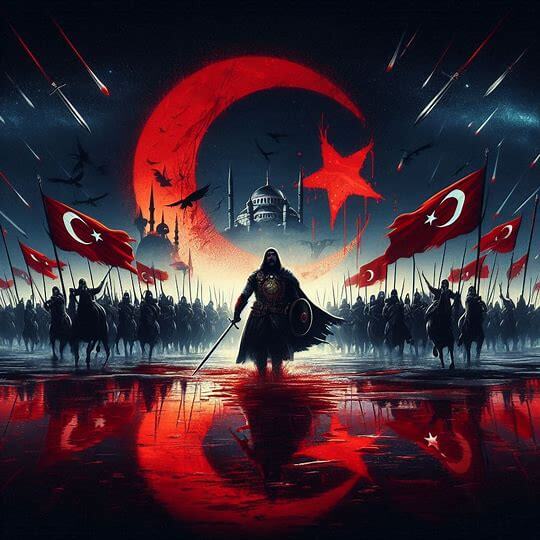The flag of Turkey, known as "Al Bayrak" (The Red Flag), features a white crescent moon and a five-pointed star set against a vivid red background. This iconic design embodies centuries of Turkish history, cultural identity, and national pride.
Turkey information
| National Flag Day | — |
| Sovereign state | Yes |
| Official name | Republic of Turkey |
| Capital | Ankara |
| Population | 84,827,983 |
| Area | 783,562 km² |
| Currency | Turkish lira (TRY) |
| Language | Turkish |
| Continent | Asia/Europe |
| Region | Middle East |
| Subregion | Southwest Asia |
| Borders | Bulgaria, Greece, Georgia, Armenia, Azerbaijan, Iran, Iraq, Syria |
| Timezone | TRT (UTC+3) |
| Calling code | +90 |
| Top-level domain | .tr |
History of the Turkish Flag
 The current design of the Turkish flag was officially adopted on June 5, 1936, following the formation of the Republic of Turkey in 1923. However, its origins can be traced back to the Ottoman Empire. Legend has it that the flag's design was inspired by the reflection of the crescent moon and a star in a pool of blood of Turkish warriors after a battle in 1071. While this story is likely apocryphal, it underscores the deep emotional and historical significance of the flag to the Turkish people.
The current design of the Turkish flag was officially adopted on June 5, 1936, following the formation of the Republic of Turkey in 1923. However, its origins can be traced back to the Ottoman Empire. Legend has it that the flag's design was inspired by the reflection of the crescent moon and a star in a pool of blood of Turkish warriors after a battle in 1071. While this story is likely apocryphal, it underscores the deep emotional and historical significance of the flag to the Turkish people.
Symbolism and Design of the Turkish Flag
Each element of the Turkish flag carries profound symbolic meaning:
- The red background symbolizes the blood shed by Turkish martyrs during the War of Independence and other conflicts throughout history. It also represents the vigor and dynamism of the Turkish nation.
- The white crescent moon is a traditional symbol of Islam, reflecting Turkey's Muslim heritage. It also symbolizes progress and growth.
- The five-pointed star represents the five principles of the Turkish Republic as defined by Mustafa Kemal Atatürk: Republicanism, Nationalism, Populism, Statism, and Revolutionism (or Reformism).
The precise positioning and dimensions of these elements are specified by law to ensure consistency in all official representations of the flag.
Usage and Significance of the Turkish Flag
 The Turkish flag is a powerful symbol of national identity and pride. It is prominently displayed on government buildings, schools, and during national celebrations such as Republic Day (October 29th) and Victory Day (August 30th). The flag serves as a unifying emblem, reminding Turkish citizens of their shared history, cultural heritage, and collective aspirations for the future.
The Turkish flag is a powerful symbol of national identity and pride. It is prominently displayed on government buildings, schools, and during national celebrations such as Republic Day (October 29th) and Victory Day (August 30th). The flag serves as a unifying emblem, reminding Turkish citizens of their shared history, cultural heritage, and collective aspirations for the future.
In Turkish culture, the flag is treated with great respect. It is considered deeply offensive to desecrate or disrespect the flag in any way. This reverence is reflected in the common phrase "Bayrak inmez, ezan susmaz" (The flag never comes down, the call to prayer never ceases), emphasizing the permanence of Turkish sovereignty and Islamic faith.
In international contexts, the Turkish flag represents the country at diplomatic events, United Nations gatherings, and global sports competitions. It embodies Turkey's unique position as a bridge between Europe and Asia, both geographically and culturally.
Interesting Facts About the Turkish Flag
- The Turkish flag is often referred to as "Ay Yıldız" (Moon Star) due to its prominent symbols.
- The exact shade of red used in the flag is defined as "Turkish flag red" or "Turkish red" and has been standardized to ensure consistency.
- During the Ottoman Empire, the flag featured a crescent moon and a multi-pointed star. The transition to a five-pointed star occurred with the establishment of the Republic of Turkey.
- The largest Turkish flag ever displayed was unfurled in Erzurum in 2019, measuring 1,453 square meters to commemorate the year Constantinople (now Istanbul) was conquered by the Ottomans.
- The flag's design has influenced other national flags, particularly those of other Muslim-majority countries, reflecting Turkey's historical influence in the Islamic world.